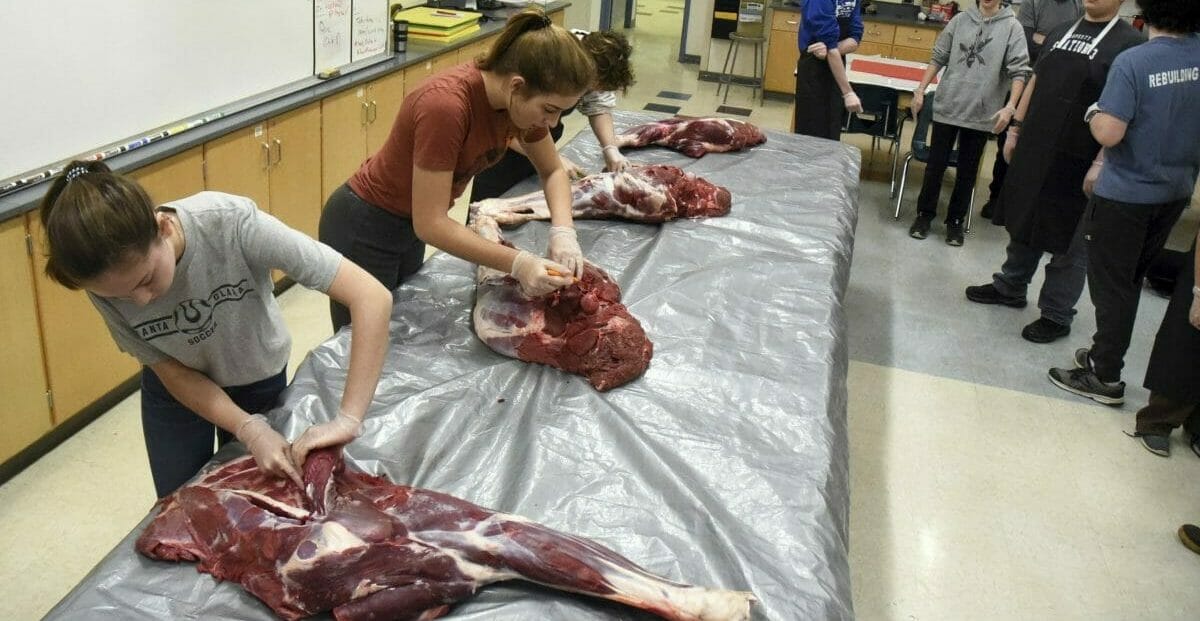
Teacher in Alaska Hunted a Moose and Let Nearly 30 Students Butcher It To Teach Them Life Skills
Students at an Alaska high school have received lessons in anatomy, life skills and Alaska cultural traditions through an unusual study source: a moose carcass.
About 30 Chugiak High School students de-boned, separated, ground and packaged the animal during a recent World Discovery Seminar class, The Anchorage Daily News reported Dec. 15.
Mason provided an interactive lesson on moose anatomy that produced some squeamish moments.
The students processed about 200 pounds of moose meat. They plan to cook and eat some of the meat at a dinner and donate the rest to charity.
Chugiak High School said the program with about 125 students and four teachers emphasizes in-depth learning and hands-on activities to enable students to become “multifaceted thinkers.”
The seminar program emphasizes experiential learning — the approach used when the students butchered the cow moose carcass that teacher Brian Mason delivered in his pickup truck.
“You can learn certainly about anatomy from diagrams and textbooks and videos. But getting your hands on an animal is a big part of the science aspect of it,” Mason said.
Mason killed the moose using a special Cultural Educational Harvest Permit from the Alaska Department of Fish and Game, which allows game animals to be killed for educational purposes.
Up to 40 permits are issued annually, primarily to schools and villages. Most are for moose, though some are for caribou, deer, black bears and mountain goats, said Tim Spivey of Alaska Fish and Game.
“We don’t just issue these Cultural Education Permits to anyone,” Spivey said.
The permit limited Mason to shooting a moose without antlers that was not a calf or a cow with a calf.
Mason had to submit a report describing the animal and his hunt and within 30 days must submit another report detailing the educational or cultural activities that took place using the animal.
[jwplayer dZxCIWpe]
The program gives participants better insight into the subjects they study, student Ryley Edwards said.
“We do a lot of things that are more interactive than other classes,” she said. “It’s more fun for learning stuff instead of just on paper.”
“They’re all being super safe and responsible and frankly they’re really engaged,” Mason said.
“I wasn’t sure how some students would really deal with the process of getting their hands on a dead animal, that can be an off-putting experience for some students, but I’ve been really impressed with them.”
The Western Journal has reviewed this Associated Press story and may have altered it prior to publication to ensure that it meets our editorial standards.
Truth and Accuracy
We are committed to truth and accuracy in all of our journalism. Read our editorial standards.
Advertise with The Western Journal and reach millions of highly engaged readers, while supporting our work. Advertise Today.












